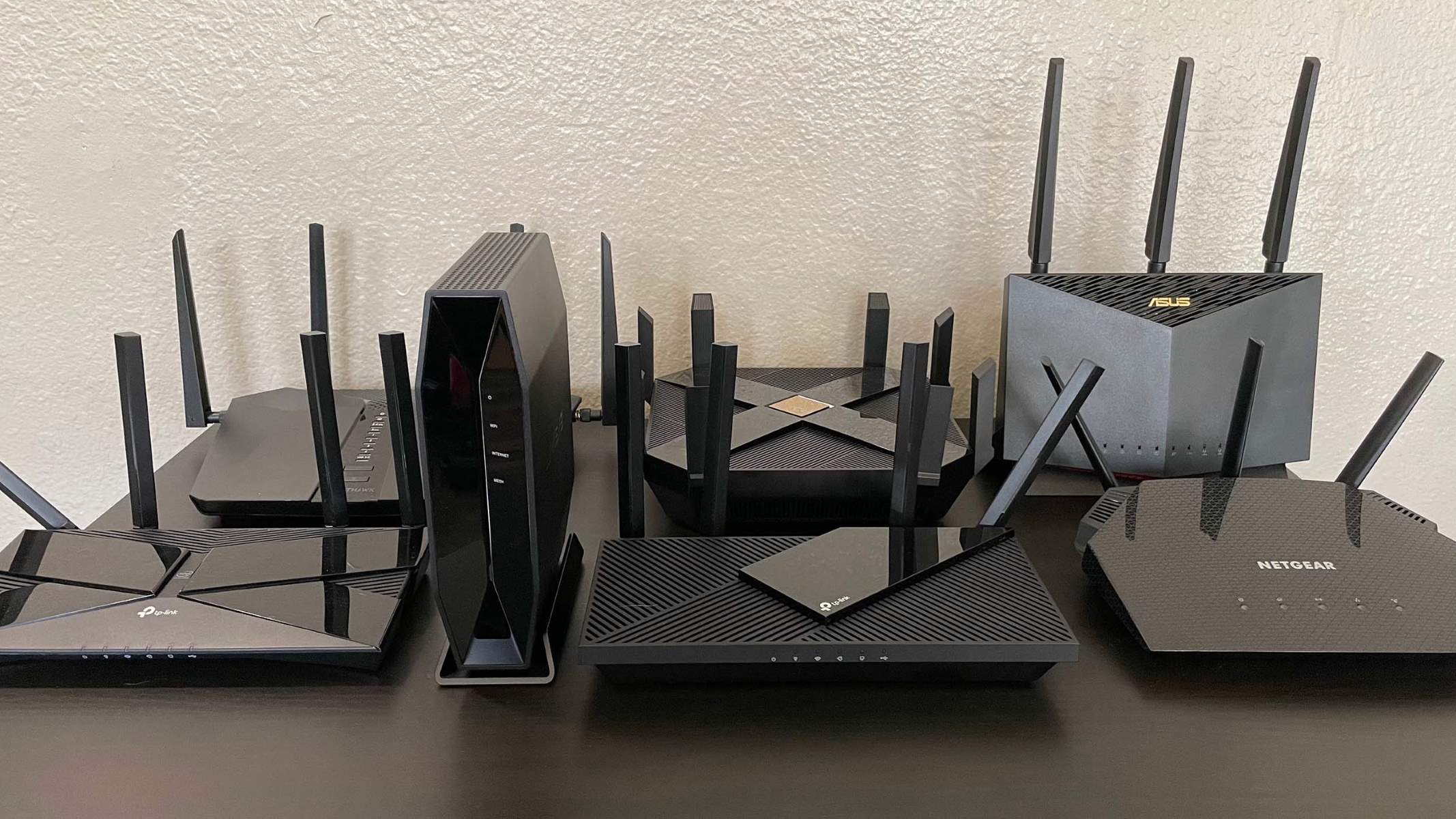Introduction
The world of technology is constantly evolving, and with it comes a vast array of jargon and technical terms. One term that you may have come across is “IP,” which stands for Internet Protocol. In today’s digital age, understanding what an IP is and how it works is crucial for anyone who uses the internet, whether for personal or professional purposes.
Put simply, an IP address is a unique numerical identifier that is assigned to every device connected to a network. This includes computers, smartphones, tablets, and even smart home devices. It serves as a digital “address,” allowing devices to communicate with each other and exchange data. Without IP addresses, the internet as we know it would not be possible.
In this article, we will delve deeper into the world of IPs, exploring their definition, how they are assigned, the different types of IPs, and their importance in today’s interconnected world. Whether you’re a casual internet user or a tech enthusiast, this article will provide you with a comprehensive understanding of what an IP is and why it matters.
Definition of an IP
An IP, or Internet Protocol, is a unique numerical identifier assigned to every device connected to a network. Think of it as the digital equivalent of a physical address. Just as your home address allows mail to be delivered to your doorstep, an IP address enables data to be sent and received between devices on the internet.
The primary function of an IP address is to facilitate communication between devices. When you send a request to access a website or any other online resource, your device uses its IP address to identify itself and establish a connection with the destination device. This allows for the seamless transfer of data packets across the internet.
IP addresses consist of a series of numbers separated by periods. For example, an IP address might look like this: 192.168.0.1. Each part of the address represents a specific network and host. The IP address can be further classified into two main types: IPv4 and IPv6.
IPv4 (Internet Protocol version 4) is the most widely used version and consists of 32 bits, allowing for about 4 billion unique addresses. However, with the increasing number of internet-connected devices, IPv4 addresses are running out. This has led to the adoption of IPv6 (Internet Protocol version 6), which utilizes 128 bits, providing an almost inexhaustible number of unique addresses.
Understanding the concept of IP addresses is crucial because they play a fundamental role in data transmission and internet connectivity. They enable devices to locate and communicate with each other, allowing you to browse the web, send emails, stream videos, and perform countless other online activities.
How an IP is Assigned
IP addresses are assigned to devices through various methods, depending on the type of network and the specific requirements of the network administrator. Here are some common ways in which IP addresses are assigned:
1. DHCP (Dynamic Host Configuration Protocol): DHCP is a protocol used to automatically assign IP addresses to devices on a network. When a device connects to a network, it sends a DHCP request, and the network’s DHCP server assigns an available IP address to the device. This is the most common method used for assigning IP addresses in home and small office networks.
2. Static IP Assignment: In some cases, network administrators assign specific IP addresses to devices manually. This is known as static IP assignment. By assigning a static IP, the device always uses the same IP address each time it connects to the network. Static IP assignments are often used for servers, network printers, and other devices that require a fixed address to ensure consistent connectivity.
3. APIPA (Automatic Private IP Addressing): APIPA is a feature used in environments where DHCP is not available or not configured. When a device is unable to obtain an IP address from a DHCP server, it automatically assigns itself an IP address from a predefined range. APIPA addresses are not routable and are only used for local network communication.
4. IP Address Reservation: Some routers and DHCP servers allow for IP address reservation. With this method, the network administrator can assign a specific IP address to a device based on its MAC address, ensuring that the device always receives the same IP address when connecting to the network.
It’s important to note that IP addresses are unique and should not be duplicated within a network. Network administrators are responsible for managing IP address allocation to ensure efficient use of available addresses.
In larger networks, such as those managed by Internet Service Providers (ISPs) or large organizations, IP address assignment is a complex process involving blocks of IP addresses allocated by regional Internet registries (RIRs).
By understanding how IP addresses are assigned, you can better troubleshoot connectivity issues and ensure the smooth operation of your network-connected devices.
Types of IPs
There are different types of IP addresses used in various network configurations. Understanding these types can help you comprehend the diverse aspects of IP addressing. Here are the most common types of IP addresses:
1. Public IP Address: A public IP address is assigned to a device that is directly connected to the internet. It is unique and globally recognizable, allowing devices to communicate with each other across the internet. Public IP addresses are assigned by Internet Service Providers (ISPs) and are used for web servers, email servers, and other devices that require direct internet access.
2. Private IP Address: Private IP addresses are used within a private network, such as a home or office network, to enable communication between devices within that network. These addresses are not directly accessible from the internet and are designated by specific IP ranges reserved for private use. Private IP addresses can be assigned to multiple devices, but they must be unique within the local network.
3. Static IP Address: A static IP address is manually assigned to a device and remains constant over time. This type of address is particularly useful for devices that require a consistent and fixed address, such as servers or network devices that need to be reachable at all times. Static IP addresses are often used for remote access, hosting websites or services, and maintaining reliable connections.
4. Dynamic IP Address: A dynamic IP address is assigned to a device by a DHCP server on a network. This type of address is temporary and subject to change. Each time a device connects to the network, it may receive a different IP address. Dynamic IP addresses are commonly used in home networks, small businesses, and other environments where there are a limited number of available IP addresses.
5. Reserved IP Address: Reserved IP addresses are specific addresses that are reserved for special purposes or specific network configurations. Examples of reserved IP addresses include the loopback address (127.0.0.1), which allows a device to connect to itself, and the broadcast address (255.255.255.255), used to send data packets to all devices on a network simultaneously.
Understanding the different types of IP addresses is essential for managing network connectivity and ensuring secure and efficient communication between devices. By knowing which type of IP address is assigned to a device, you can determine its accessibility and configure network settings accordingly.
IPv4 vs IPv6
IPv4 and IPv6 are two distinct versions of the Internet Protocol, each with its own set of characteristics and advantages. Understanding the differences between them is essential in addressing the growing need for IP addresses in our increasingly connected world.
IPv4, the older and more widely used version, utilizes 32-bit addresses, allowing for approximately 4.3 billion unique addresses. However, due to the exponential growth of internet-connected devices, IPv4 addresses are in high demand and nearing exhaustion. This scarcity has led to the development and implementation of IPv6.
IPv6, on the other hand, incorporates 128-bit addresses, offering an almost limitless number of unique IP addresses. With approximately 340 undecillion possible addresses (that’s 340 followed by 36 zeros), IPv6 ensures that every connected device can have a unique identifier. This abundance of addresses not only accommodates the rapid expansion of internet-enabled devices but also enables the implementation of advanced technologies such as the Internet of Things (IoT).
Apart from the difference in address space, IPv6 introduces several other improvements over IPv4. One of the notable enhancements is the simplified header structure of IPv6, which reduces the processing overhead on network devices, resulting in more efficient routing of data packets. Additionally, IPv6 supports built-in security features, such as IPsec (Internet Protocol Security), which provides end-to-end encryption and authentication for enhanced data protection.
Despite the numerous advantages of IPv6, the adoption process has been relatively slow. Many networks and devices still primarily rely on IPv4. This has led to the implementation of transition mechanisms that enable communication between IPv4 and IPv6 networks. These mechanisms, such as dual-stack, tunneling, and translation, allow for a gradual migration from IPv4 to IPv6 while maintaining compatibility with existing IPv4 infrastructure.
As the demand for IP addresses continues to rise, the transition to IPv6 is becoming increasingly important. Network administrators, Internet Service Providers (ISPs), and device manufacturers are working towards IPv6 readiness to ensure the seamless connectivity of future devices and applications. It is vital for organizations and individuals alike to adapt and embrace IPv6 to secure the future growth and stability of the internet.
In summary, IPv4 and IPv6 are two distinct versions of the Internet Protocol, with IPv6 offering vast address space and enhanced features compared to the aging IPv4. The migration to IPv6 is necessary to support the increasing number of connected devices and enable the development of advanced technologies that rely on seamless internet connectivity.
Static vs Dynamic IPs
When it comes to assigning IP addresses, two primary methods are used: static IP addressing and dynamic IP addressing. Understanding the difference between these approaches is crucial in managing network connectivity and addressing specific requirements.
A static IP address is manually assigned to a device and remains constant over time. This means that the device will always use the same IP address whenever it connects to the network. Static IP addresses are often preferred for devices that require consistent connectivity, such as servers, network printers, and routers. With a static IP, these devices can be easily accessed and identified on the network. Additionally, static IPs are commonly used for remote access, hosting websites or services, and maintaining reliable connections.
On the other hand, a dynamic IP address is dynamically assigned to a device by a DHCP server on the network. This means that each time the device connects to the network, it may receive a different IP address. Dynamic IP addresses are commonly used in home networks, small businesses, and other environments where there are a limited number of available IP addresses. Dynamic addressing allows for efficient use of IP addresses by reusing them when devices are not connected to the network. It also simplifies the network management process by automatically assigning IP addresses to devices without manual intervention.
The choice between static and dynamic IP addressing depends on various factors. Static IPs are generally preferred for devices that require consistent and easily identifiable connections. This includes servers that need to be accessed remotely or devices that provide services over the network. Static IPs also allow for more precise control over network configurations and security settings.
Dynamic IPs, on the other hand, provide a more flexible and efficient approach to IP address allocation. With dynamic addressing, devices can easily join and leave the network without causing conflicts or exhausting available IP addresses. This makes it ideal for environments where devices frequently connect and disconnect from the network.
It is worth noting that regardless of whether a device has a static or dynamic IP address, it can still communicate with devices using either addressing method. The distinction lies in the stability and predictability of the IP address assigned to the device.
In summary, static IP addresses are manually assigned and remain constant, while dynamic IP addresses are dynamically assigned by a DHCP server. The choice between static and dynamic addressing depends on the specific requirements of the devices and network configuration. Both methods play a crucial role in managing network connectivity and ensuring effective communication between devices.
How an IP Address is Used
IP addresses are fundamental to the functioning of the internet, as they play a critical role in facilitating communication between devices. Here are some of the key ways in which IP addresses are used:
1. Device Identification: Every device connected to a network is assigned a unique IP address. This address serves as the identifier for the device, allowing other devices on the network to send data packets specifically to that device. By using IP addresses, devices can establish direct connections and exchange information seamlessly.
2. Routing: IP addresses enable the routing of data packets across networks. When you send a request to access a website or any online resource, your device adds the destination IP address to the data packet. Routers then use this IP address to determine the most efficient path for the packet to reach its destination. This process is crucial for ensuring that data is transmitted accurately and efficiently across the internet.
3. Internet Protocol Version Compatibility: IP addresses are essential for ensuring compatibility between different versions of the Internet Protocol, such as IPv4 and IPv6. Network devices and servers need to interpret and direct data packets based on the specific IP version used. The IP address serves as a crucial piece of information that allows devices to communicate effectively, regardless of the IP version in use.
4. Network Address Translation (NAT): NAT is a technique used to allow multiple devices to share a single IP address. In many home and office networks, a single public IP address is assigned to the network’s router, while individual devices have private IP addresses. NAT translates the private IP addresses of devices to the public IP address when data is sent out to the internet and vice versa when data is received. This enables multiple devices to access the internet using a single IP address.
5. Geo-location and Network Monitoring: IP addresses are used in geo-location services to determine the geographic location of a device or website visitor. This information can be valuable for various purposes, such as targeted advertising, security measures, and website analytics. Additionally, network administrators use IP addresses to monitor and track network activity, identify potential security threats, and troubleshoot connectivity issues.
6. Security and Access Control: IP addresses play a crucial role in security measures and access control. Firewalls, for example, use IP addresses to filter and block certain incoming or outgoing traffic based on predetermined rules. Networks can also implement IP address whitelisting or blacklisting to control access to specific resources or restrict unauthorized connections.
In summary, IP addresses are used for device identification, routing of data packets, compatibility between IP versions, NAT, geo-location, network monitoring, and security measures. Understanding how IP addresses are used is essential for managing network connectivity, ensuring secure communication, and maintaining the efficiency of internet-based services and applications.
Importance of IP Address
IP addresses play a crucial role in the functioning of the internet and modern networking systems. They serve as unique identifiers for devices and enable seamless communication between devices and across networks. Here are some key reasons highlighting the importance of IP addresses:
1. Device Connectivity: IP addresses are essential for connecting devices to the internet and other networks. Without a unique IP address, devices would not be able to establish connections, access online resources, or communicate with other devices. IP addresses enable the seamless transmission of data packets across networks and ensure that information reaches its intended destination.
2. Network Communication: IP addresses allow devices to communicate with each other over local networks or the internet. Whether it’s browsing the web, sending emails, making VoIP calls, or streaming videos, IP addresses facilitate the transfer of data between devices, ensuring efficient communication and data exchange.
3. Internet of Things (IoT): With the rapid expansion of IoT devices, IP addresses have become even more critical. Smart homes, wearable devices, industrial sensors, and other IoT devices rely on IP addresses to connect to the internet and interact with other devices and services. IP addresses enable remote monitoring, control, and automation, driving innovation and convenience in various industries.
4. Network Routing: IP addresses enable routers to determine the most efficient path for data packets to reach their destinations. This routing process ensures that data is transmitted accurately and efficiently across networks, minimizing delays and optimizing network performance.
5. Geo-Location and Personalization: IP addresses are used in geo-location services to determine the approximate geographic location of a device or website visitor. This information is valuable for targeted advertising, localized content delivery, and providing personalized user experiences based on location-specific preferences.
6. Security and Access Control: IP addresses play a crucial role in network security measures. Firewalls and access control lists (ACLs) use IP addresses to filter and block unwanted or malicious traffic, protecting networks from potential threats. IP addresses also help track and monitor network activity, allowing administrators to identify and respond to security incidents effectively.
7. Network Planning and Management: IP addresses are essential for network planning, design, and management. They enable network administrators to allocate and manage IP resources efficiently, ensuring that devices have unique addresses and preventing conflicts. IP addresses are also used in network documentation, troubleshooting, and performance monitoring activities.
In summary, IP addresses are of paramount importance as they facilitate device connectivity, enable network communication, support IoT devices, drive efficient network routing, enable geo-location services, enhance network security, and aid in network planning and management. Understanding the significance of IP addresses is crucial for individuals and organizations to effectively navigate and leverage the capabilities of today’s interconnected world.
Important Factors to Consider When Managing IPs
Effectively managing IP addresses is essential for maintaining a stable and secure network. Whether you are an individual managing a home network or an IT professional overseeing a large corporate network, here are some important factors to consider:
1. IP Address Planning: Proper IP address planning involves carefully designing and assigning IP addresses to devices. Consider the scalability of your network and allocate IP address ranges accordingly. This helps prevent IP address exhaustion and ensures the efficient utilization of available addresses. Documenting the assigned IP addresses and maintaining an up-to-date inventory is also crucial for effective IP address management.
2. IP Address Assignment: Determine whether devices within your network should use static or dynamic IP addresses. Static IP addressing allows for consistent connectivity for devices that require it, while dynamic addressing simplifies IP allocation and management. Consider the specific needs of your devices and the level of control you require when deciding how to assign IP addresses.
3. DHCP Configuration: If dynamic addressing is preferred, properly configure and manage your DHCP (Dynamic Host Configuration Protocol) server. Ensure that the DHCP lease duration is appropriate for your network environment, balancing the need to keep IP addresses available with the need for consistent connectivity. Regularly monitor and update DHCP settings to avoid IP address conflicts and maintain optimal network performance.
4. IP Address Security: Implement measures to secure your IP addresses and prevent unauthorized access. Use firewalls, access control lists (ACLs), and virtual private networks (VPNs) to control and monitor traffic to and from devices. Regularly update and patch network devices to protect against vulnerabilities that could compromise IP address security.
5. IP Address Tracking and Inventory: Maintain an accurate inventory of assigned IP addresses to track and manage IP address usage. Develop a system or utilize network management tools to monitor IP address allocations, detect and resolve IP conflicts, and ensure that addresses are used efficiently. This will help streamline troubleshooting processes and maintain network stability.
6. IP Address Documentation: Document all IP address assignments, including details such as device names, MAC addresses, and associated user names. This documentation is crucial for efficiently managing IP addresses, troubleshooting network issues, and ensuring continuity during device replacements or upgrades.
7. Periodic Audits and Cleanup: Conduct regular audits to review IP address utilization and identify unused or obsolete addresses. Reclaim and reallocate these addresses to optimize your IP address space. Regularly review and update IP address documentation and inventory to reflect any changes in your network.
8. IP Address Version Transition: If your network still predominantly uses IPv4, consider integrating IPv6 to future-proof your network and accommodate the growing number of devices. Plan and implement IPv6 addressing alongside your existing IPv4 infrastructure, ensuring a smooth transition without causing disruptions to network connectivity.
Proper management of IP addresses is crucial for maintaining a secure, efficient, and stable network environment. By considering these factors and implementing best practices, you can effectively manage your IP addresses, optimize network performance, and ensure the smooth operation of your network-connected devices.
Conclusion
IP addresses are the backbone of the internet and play a vital role in connecting devices, facilitating communication, and ensuring seamless data transmission. Understanding the definition, assignment, types, and usage of IP addresses is crucial for anyone navigating the digital landscape.
From static and dynamic IP addressing to the transition from IPv4 to IPv6, each aspect of IP addresses serves a specific purpose in managing network connectivity. Whether you’re a home user managing a small network or an IT professional responsible for a large-scale corporate infrastructure, proper IP address management is essential for maintaining stability, security, and efficient operation.
Considerations such as IP address planning, assignment methods, DHCP configuration, security measures, inventory management, and IPv6 readiness all contribute to effective IP address management. By carefully considering these factors and implementing best practices, you can optimize network performance, prevent IP address conflicts, and streamline troubleshooting processes.
As the digital landscape continues to evolve, the importance of IP addresses will only grow. With the proliferation of internet-enabled devices and the rapid expansion of IoT technologies, the demand for unique IP addresses and effective management strategies will continue to rise.
In conclusion, IP addresses serve as the digital addresses that enable devices to connect, communicate, and transfer data across networks. By comprehending the significance of IP addresses and implementing proper management practices, individuals and organizations can ensure seamless connectivity, enhance security, and harness the full potential of the interconnected world.

























